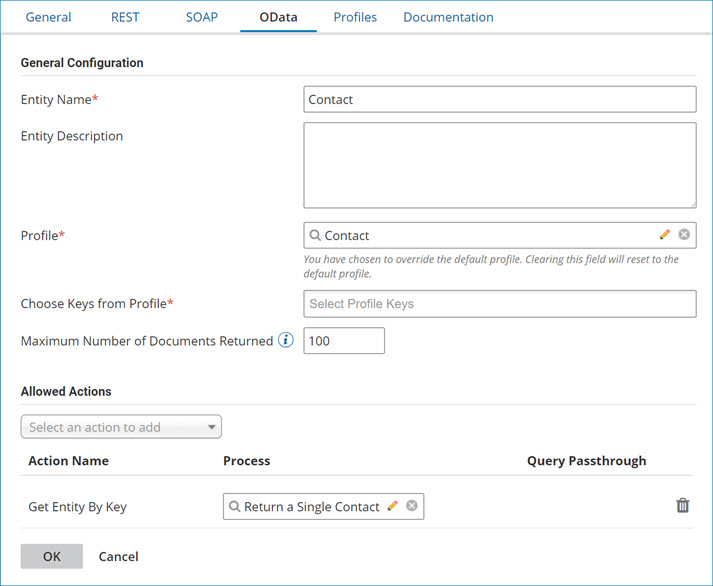OData API endpoint URIs
When your API Service component uses OData as the protocol, your OData URI has three components: a service root URI, a resource path, and query options.
-
The service root URI identifies the root of an OData service.
-
The resource path identifies the resource to be interacted with and enables the data model (i.e. your profile). The resource path is composed of entities, which have these characteristics:
-
A collection name for sets of entity types, such as products, categories, or suppliers.
-
A name that is different from the name of the set.
-
A primitive or complex property type. Primitive types consist of a named or typed property and a key. Complex types are containers and do not have keys.
-
A namespace — OData does not support the Empty Namespace like XML does. Because System, Transient, and Edm are reserved, you cannot publish entities on those namespaces.
-
-
System Query Options control the amount and order of data that an OData service returns. The supported options are:
-
$orderby — in collections this option specifies the values to use to order the entries.
-
$top — identifies a subset by selecting only the first N items of the set. If the $top option is set to a value greater than that in Maximum Number of Documents Returned, only the value of Maximum Number of Documents Returned will be returned, along with the moreDataToken.
-
$skip — identifies a subset by seeking N entries into a collection, then selecting only the remaining entries. For example, when entry N=500, entries 501 and higher are returned.
-
$filter — identifies a subset by selecting only entries that satisfy the specified predicate expression. Expressions can be properties and literals. Literal values can be strings within single quotes, numbers, or boolean values.
noteIf a Get Entity action with the Query Passthrough option is specified for an entity, query filtering is applied within the listener process linked to the action. The option does not support all $filter operators and methods. For more information about the Query Passthrough option, see the linked topic.
-
$select — identifies a value that specifies a response.
-
$inlinecount — specifies that the response include a count of the number of entries in the collection.
-
If the URI contains a $top or $skip query option but not an $orderby option, then the entries in the set are first fully ordered by the data service.
If a URI contains an $inlinecount and a $filter query option, you must apply $filter first.

